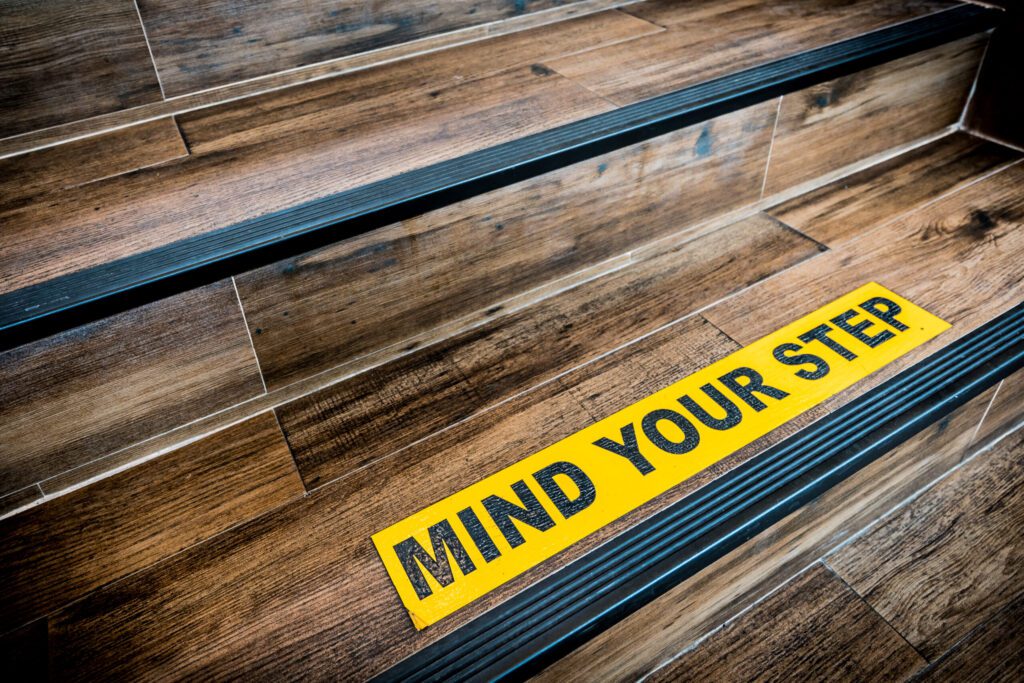Falls are one of the leading causes of injury on the job, but did you know they are also one of the leading sources of injuries at home? Unfortunately, we tend to be more relaxed about safety at home, and that leads to the statistic that more than 75 percent of falls occur in the home! Seniors are even more at risk. One of the easiest ways to stay safe in your home is to be smart and make key changes. Take our pop quiz and find out how to fall-proof your home.
1.) Which of the following are the top three considerations when fall-proofing your home?
- Adequate lighting everywhere, inside and out
- Reducing clutter
- Handrails
- Having easy access to the things you use most
2.) True or false? You always want three points of contact with something sturdy—such as two hands and a foot, or two feet and a hand on a grab bar, handrail, or the floor—no matter what you are doing, such as getting out of the shower or walking up stairs.
3.) When it comes to outside doorways, what steps can you take to reduce falls?
- Fix wobbly or cracked steps, landings, and walkways.
- Make sure entryways are well lit.
- Install a grab bar on one side of the door to assist you.
- Keep the area clear of trip hazards.
- All of the above
4.) True or false? Chairs and stools are dangerous to step on to reach something high up.
5.) Which of the following is NOT a fall prevention tip for your kitchen?
- Place commonly used items on countertops or in low cabinets.
- Install carpet in the kitchen.
- Use rubber-backed throw rugs.
- Don’t leave floors wet from spills or cleaning.
6.) What steps can you take to fall-proof stairs?
- Keep all clutter off of stairs.
- Have adequate lighting at both the top and bottom of the stairway.
- Add a strip of no-slip, contrasting colored tape to the edge of each stair to be able to see each stair better.
- Add a second handrail if your stairs only have a handrail on one side.
- All of the above
7.) True or false? You should have someone else change your lightbulbs for you, and choose LED lights so they need to be changed less often.
8.) Which of the following is NOT a tip for fall-proofing the bathroom?
- Use towel racks as grab bars.
- Put a non-slip rubber mat in the shower and/or bathtub.
- Have grab bars installed near the toilet and tub, making sure they are level and anchored to the wall.
- Consider using a shower chair and a hand-held showerhead.
9.) Which of the following are tips for fall-proofing your bedroom?
- Have a light by the bed within easy reach.
- Consider installing a bed rail to help you get in and out of bed.
- Have a well-lit, clear path from the bedroom to the bathroom.
- Have a phone in easy reach
- All of the above
10.) True or false? A medical alert device is a good idea if you are concerned about falling in your home.
compiled by ERIKA ALDRICH / information provided by the NATIONAL INSTITUTE ON AGING and the NATIONAL COUNCIL ON AGING
ANSWERS:
- C. Handrails. Adequate lighting, reducing clutter, and easy access to the items you use most are the three most useful options for fall-proofing every room in your home.
- True. Having three points of contact on a sturdy surface can save you from a fall if you slip or lose your balance.
- D. All of the above.
- True. A reach stick grabbing tool is the best option for grabbing things high up or asking someone to get it for you.
- B. Install carpet in the kitchen. All the rest are good options for fall-proofing your kitchen.
- E. All of the above. Make sure stairs are clutter-free, well-lit, easy to see, non-slip, and use handrails!
- True. Ask a family member, neighbor, or friend to change your lightbulbs, and using LEDs means they will need to be replaced less often.
- A. Use towel racks as grab bars. Towel racks are not sturdy enough to catch you in a fall, but anchored grab bars can be used as towel racks.
- E. All of the above.
- True. A medical alert device is a good idea, especially if you live alone!
